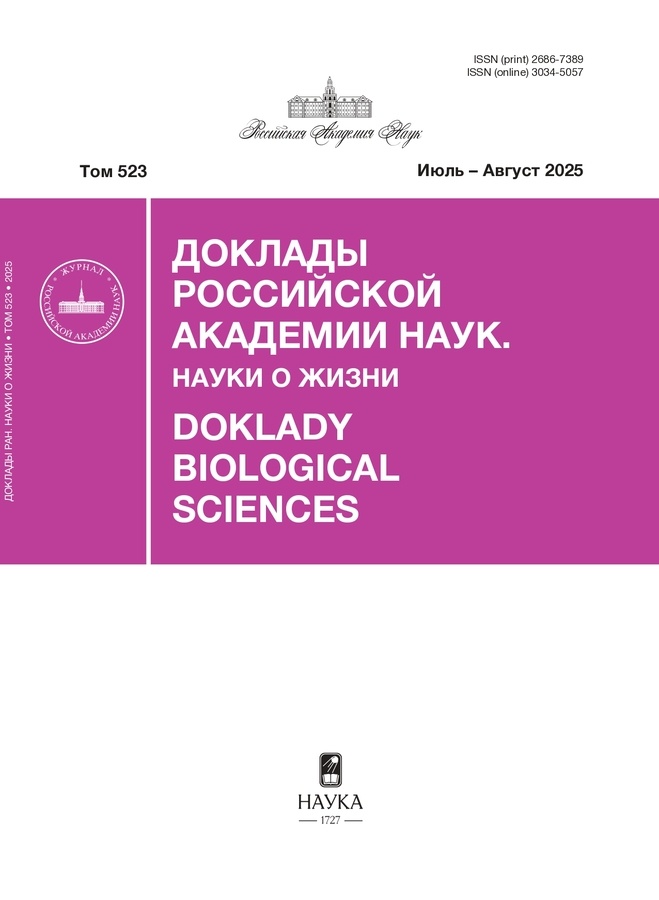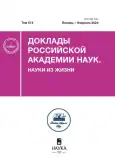Relationship between phytoplankton, heterotrophic plankton, and planktivorous fish productions in different water bodies
- Authors: Boulion V.V.1
-
Affiliations:
- Zoological Institute RAS
- Issue: Vol 514, No 1 (2024)
- Pages: 5-10
- Section: Articles
- URL: https://rjsvd.com/2686-7389/article/view/651454
- DOI: https://doi.org/10.31857/S2686738924010017
- EDN: https://elibrary.ru/LAWNLW
- ID: 651454
Cite item
Abstract
On the example of 14 lake-type water bodies distributed over different latitudes of the northern hemisphere, it was shown that the efficiency of phytoplankton production transformation through heterotrophic bacterioplankton and non-predatory zooplankton to predatory zooplankton and planktivorous fish increases in the direction from eutrophic to oligotrophic water bodies. The highest ratios between autotrophic and heterotrophic organism production were found for lakes and reservoirs, where the contribution of allochthonous substances to the total energy flow is relatively high. Bacterioplankton utilizing allochthonous DOM is an additional source of energy for zooplankton, which, in turn, serves as a food object for planktivorous fish. Therefore, to predict the total biological productivity and production of the fish community, it is necessary to take into account the production of not only autotrophic plankton, but also that part of heterotrophic bacterioplankton that specializes in the utilization of DOM entering the water body from outside.
Full Text
About the authors
V. V. Boulion
Zoological Institute RAS
Author for correspondence.
Email: vboulion@mail.ru
Russian Federation, St. Petersburg
References
- Иванова М. Б. Продукция планктонных ракообразных. Л.: ЗИН АН СССР, 1985. 222 с.
- Трифонова И. С., Афанасьева А. Л., Макарцева Е. С., Бардинский Д. С. Соотношение фито- и зоопланктона в разнотипных озерах Карельского перешейка // Известия Самарского научного центра РАН. 2016. Т. 18. № 2 (2). С. 515–519.
- Уманская М. В., Быкова С. В., Горбунов М. Ю., Краснова Е. С., Мухортова О. В., Сабитова Р. З., Тарасова Н. Г., Жариков В. В. Структура сообщества планктона озера Кандры-Куль летом 2010 и 2012 гг. // Известия Самарского научного центра РАН. 2018. Т. 20. № 2. С. 45–54.
- Coveney M., Cronberg G., Enely M., Larsen K., Olofsson L. Phytoplankton, Zooplankton and Bacteria: Standing Crop and Production Relationships in a Eutrophic Lake // Oikos. 1977. V. 29. № 1. P. 5–21.
- Lacroix G., Lescher-Moutoué F., Bertelo A. Biomass and production of plankton in shallow and deep lakes: are there general patterns? // Annales de Limnologia. 1999. V. 35. № 2. P. 111–122.
- Havens K. E., Beaver J. R. Zooplankton to phytoplankton biomass ratios in shallow Florida lakes: an evaluation of seasonality and hypotheses about factors controlling variability // Hydrobiologia. 2013. V. 703. № 1. P. 177–187.
- Бондаренко Н. А., Русанов И. И., Черницына С. М., Шубенкова О. В., Захаренко А. С., Погодаева Т. В., Пименов Н. В., Земская Т. И. Структура и продукционный потенциал летнего фитопланктона озера Байкал в современный период // Водные ресурсы. 2022. Т. 49. № 1. С. 66–76.
- Бульон В. В. Система оценки и прогнозирования биопродуктивности экосистем озерного типа // Водные ресурсы. 2020. Т. 47. № 3. С. 302–311.
- Гидробиологические исследования на реке Тюп и Тюпском заливе озера Иссык-Куль / под ред. Г. Г. Винберга. Л.: ЗИН АН СССР, 1977. 144 с.
- Гидроэкологический мониторинг зоны влияния Бурейского гидроузла / под ред. С. Е. Сиротского. Хабаровск: ИВЭП ДВО РАН, 2007. 273 с.
- Гидроэкологический мониторинг зоны влияния Зейского гидроузла / под ред. С. Е. Сиротского. Хабаровск: ИВЭП ДВО РАН, 2010. 354 с.
- Многолетние изменения биологических сообществ мезотрофного озера в условиях климатических флуктуаций и эвтрофирования / под ред. И. С. Трифоновой. СПб: ЛЕМА. 246 с.
- Nyamweya C. S., Nyaboke H. M., Aura C. M., Momanyi K. N., Mlaponi E., Odoli C. O., Njiru J. M. Lake Victoria’s bounty: A case for riparian countries’ blue economic investment // Frontiers in Environmental Science. 2022. P. 1–6.
- Bootsma H. A., Hecky R. E. A comparative introduction to the biology and limnology of the African Great Lakes // Journal of Great Lakes Research. V. 29. Sup. 2. P. 3–18.
- Darchambeau F., Sarmento H., Descy J.-P. Primary roduction in a tropical large lake: The role of phytoplankton composition // Science of the Total Environment. 2014. V. 473–474. P. 178–188.
- Håkanson L., Boulion V. V. The Lake Foodweb – modelling predation and abiotic/biotic interactions. Leiden: Backhuys Publishers, 2002. 344 p.
- Productivity problems of freshwaters / ed. Z. Kajak, A. Hillbricht-Ilkowsa. Warszawa-Krakow: Polish Scientific Publishers, 1972. 918 c.
- Бульон В. В. Первичная продукция и рыбопродуктивность: моделирование и прогноз // Биология внутренних вод. 2006. № 1. С. 48–56.
- Биологическая продуктивность северных озер. 1. Озера Криво и Круглое / под ред. Г. Г. Винберга. Л.: Наука. 1975. 228 с.
- Сорокин Ю. И. Первичная продукция морей и океанов // Общая экология. Биоценология. Гидробиология. Т. 1. М.: Наука, 1973. С. 7–46.
Supplementary files













